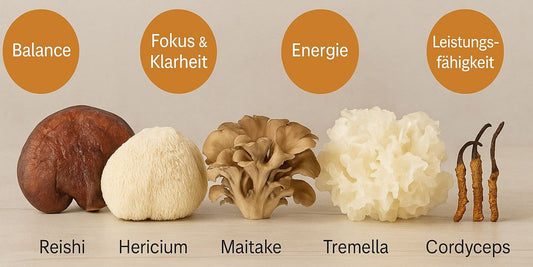Stress is a ubiquitous part of modern life that can have both positive and negative effects on our well-being. In today's stressful world, it is important to distinguish between two types of stress: distress and eustress .
While distress can be harmful and overwhelming, eustress can be experienced as beneficial and motivating.
In this article, we will talk in detail about what distress and eustress are, how they differ from each other, and how we can best deal with them. We will look at the symptoms of each type of stress and provide practical coping strategies to effectively manage both negative and positive stress. Ultimately, the goal is to develop a balanced and healthy relationship with stress to improve our well-being and quality of life.
Distress and eustress are two terms used to describe different types of stress, each with different effects on the body and mind.
Distress:
Distress refers to negative or harmful stress. It occurs when a person is overworked, overwhelmed, or under intense pressure and does not have adequate coping skills to deal with the demands. Distress can have a variety of causes, including work stress, financial problems, interpersonal conflict, grief, or traumatic events.
Symptoms of distress:
- anxiety
- depression
- sleep disorders
- exhaustion
- concentration problems
- Physical complaints such as headaches or stomach problems
Dealing with Distress:
- Identification of stressors: It is important to identify the causes of distress in order to develop appropriate coping strategies.
- Stress management techniques: These include relaxation techniques such as meditation, deep breathing or progressive muscle relaxation.
- Time management: Organizing and prioritizing tasks can help reduce feelings of overload.
- Social support: Talking to friends, family or professional counselors can help reduce stress and manage pressure.
Eustress:
In contrast to distress, eustress refers to positive or beneficial stress. It occurs when a person is challenged but is still able to cope with the challenges and possibly even benefit from them. Eustress can come from a variety of sources, such as professional challenges, new experiences, or personal growth.
Symptoms of eustress:
- Increased energy and motivation
- feeling of satisfaction and fulfillment
- Improved performance
- Increased creativity and problem-solving skills
Dealing with Eustress:
- Acceptance and positive attitude: Eustress can be seen as an opportunity to promote personal growth and take on new challenges.
- Self-care: It is important to take care of yourself during stressful times, get enough sleep, eat healthy, and exercise regularly.
- Reflection and learning: By reflecting on experiences and challenges, you can learn from them and grow personally.
- Set boundaries: It's important to be aware of when stress is positive and when it becomes too overwhelming. Setting boundaries and seeking support when necessary can help maintain a healthy balance.
Overall, it is important to recognize that not all types of stress are harmful. Eustress can be a positive and motivating force, while distress indicates that changes in how one deals with stressors may be needed. By developing healthy coping skills and perceiving stress as a normal part of life, one can learn to better manage both distress and eustress.
Transforming Distress into Eustress
Yes, it is possible to transform distress into eustress by consciously working on your mindset and coping strategies. Here are some ways you can transform distress into eustress:
- Dealing with stressors: Try to change your perspective on stressful situations. Instead of seeing them as threats, see them as challenges that can promote your growth.
- Stress management techniques: Learn effective stress management techniques such as relaxation exercises, mindfulness practices or cognitive restructuring to better deal with stressful situations and break negative thought patterns.
- Self-care: Nurture yourself and take care of your needs. Make sure you get enough sleep, eat well, exercise regularly and allow enough recovery time to build your resilience to stress.
- Personal growth: Use stressful situations as an opportunity for personal growth and development. See challenges as opportunities to improve your skills and learn new ones.
- Positive thinking patterns: Train your brain to develop positive thinking patterns and focus on the good in every situation. Look for solutions instead of focusing on problems.
- Set boundaries: Learn to recognize and set your boundaries. Say no to additional obligations if you are already overloaded and focus on what is important to you.
- Mindfulness: Practice mindfulness to live in the moment and be aware of your thoughts and feelings without judging them. This can help reduce stress and build resilience.
- Social support: Seek out friends, family or other trusted people to get support and perspective in stressful times. Share your feelings and experiences and let others support you.
By applying these strategies and working on your mindset and coping skills, you can learn to transform distress into eustress and use stressful situations as opportunities for personal growth and development.
Stay healthy and individual!
You might also be interested in:




